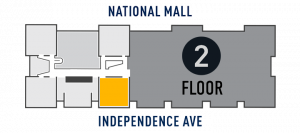In April of 1960, Weather Bureau personnel at Army Signal Corp's Fort Monmouth prepared this nephanalysis (cloud map) from data returned by the TIROS I (Television Infrared Observation Satellite), the first weather satellite. It was the first satellite-based nephanalysis distributed to the meteorological community and signaled the beginning of space-based weather observation.
TIROS I was the world's first weather satellite, allowing forecasters and scientists to see directly large-scale features of the Earth's weather systems. By the mid-1960s, the TIROS program launched a series of satellites to provide routine, daily weather observations. The program is still in operation today and, in conjunction with other weather satellites, has made space-based weather observations a commonplace of contemporary life.
This artifact is autographed by the Weather Bureau personnel who prepared it. J. Gordon Vaeth donated it to the Museum in 1965.
Display Status
This object is on display in One World Connected at the National Air and Space Museum in Washington, DC.

Object Details
Country of Origin
United States of America
Type
LITERATURE AND RESEARCH-Miscellaneous
Manufacturer
United States Weather Bureau
Dimensions
2-D - In Frame (H x W x D): 25.4 × 33 × 1.6cm (10 in. × 1 ft. 1 in. × 5/8 in.)
Materials
Wood
Paper
Ink
Paint
Plastic
Inventory Number
A19650275000
Credit Line
Gift of J. Gordon Vaeth
Data Source
National Air and Space Museum
Restrictions & Rights
Usage conditions apply
For more information, visit the Smithsonians Terms of Use.